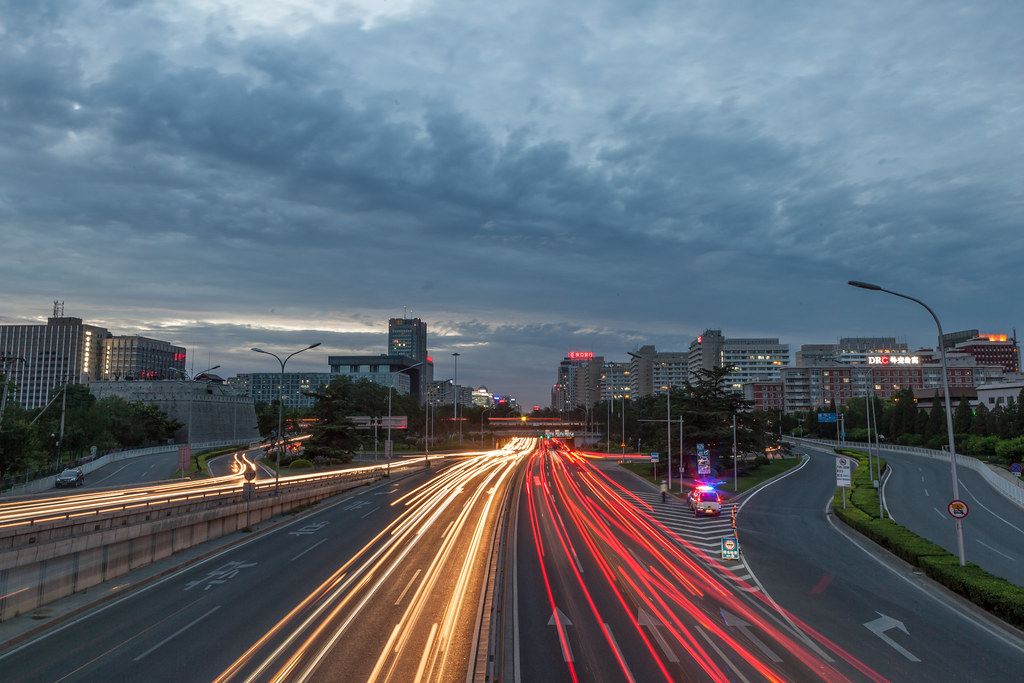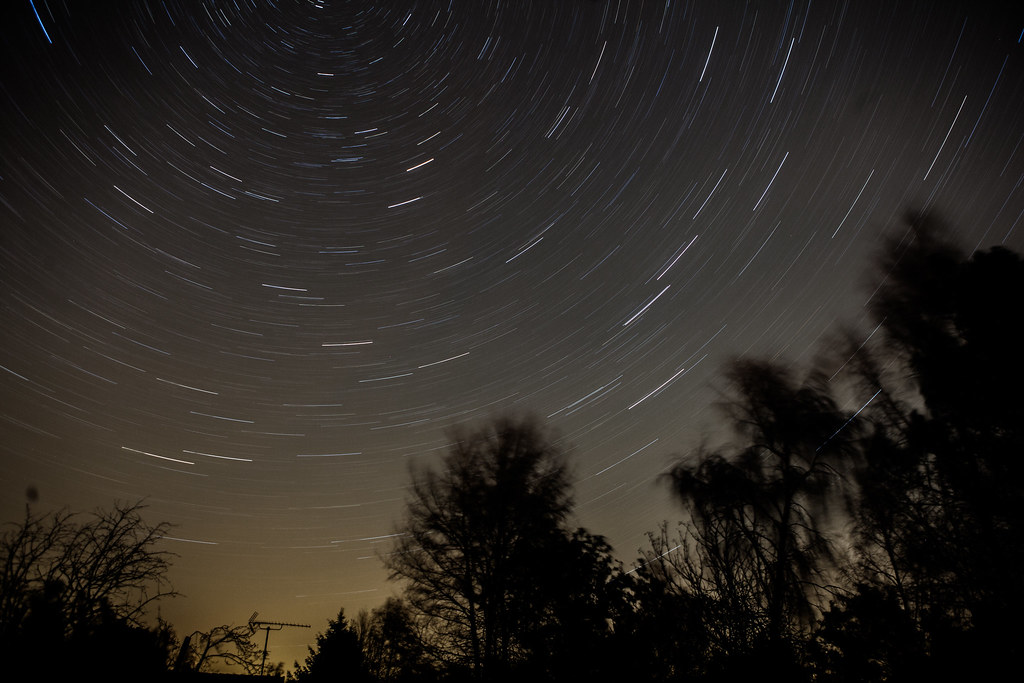
6s, f/20, ISO 200, 24mm
The second ring road in Beijing (more or less) runs the parameter of the old city wall. The Beijing city wall stood for more than 500 years until most of it was torn down beginning in the 1960s to make room for Subway Line 2 and the second ring road. The Beijing Ancient Observatory, which formed part of the city wall, is visible on the left.
I shot the picture just after sunset on a hot July summer night on a pedestrian bridge. The exposure is six seconds long at the lens' minimum aperture at f/22. Taking long exposures on Beijing's pedestrian bridges can be tricky because the bridges to to shake a little large vehicles pass below. If the platform had been a bit steadier, I would have gone for a slightly longer exposure to make the light trails a bit stronger.

